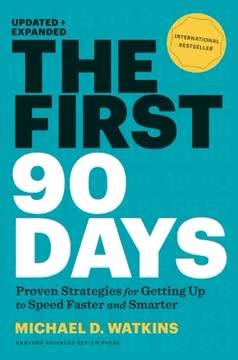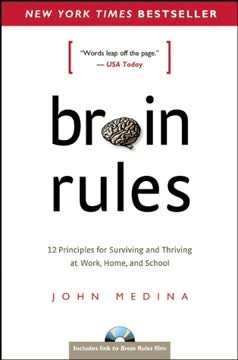Key Takeaways
1. Embrace your accidental journey into instructional design
I am a walking accident. Generally a happy one, but an accident nonetheless.
Accidental beginnings are common. Many instructional designers stumble into the field from diverse backgrounds, bringing unique perspectives and skills. This diversity enriches the profession, allowing for creative problem-solving and innovative approaches to learning design. Embrace your unconventional path and use it as a strength.
Intentional growth is key. While you may have started accidentally, commit to becoming an intentional practitioner. Continuously learn about learning theories, instructional strategies, and emerging technologies. Connect with peers, attend conferences, and stay current with industry trends to evolve from an accidental to an intentional instructional designer.
2. Master the four slices of the learning pie
There are four slices in a big pie, with each piece representing a critical part of the profession: learning, creativity, technology, and business.
Balanced expertise is crucial. To be a well-rounded e-learning professional, develop skills in all four areas:
- Learning: Understand adult learning theories and instructional strategies
- Creativity: Craft engaging content and visually appealing designs
- Technology: Stay current with e-learning tools and platforms
- Business: Align learning solutions with organizational goals and measure impact
Identify your sweet spot. Recognize your strengths and areas for improvement within the learning pie. Focus on developing your expertise in one area while maintaining a working knowledge of the others. This T-shaped skill set allows you to specialize while collaborating effectively with experts in other domains.
3. Design with intention, not just information
Design is not solely about making things aesthetically pleasing, although that is part of it. Design, at its core, is about solving problems.
Solve performance problems. Start by identifying the root cause of performance issues and determine if training is the appropriate solution. Use Cathy Moore's action mapping approach to focus on business goals and desired behaviors rather than simply conveying information.
Create meaningful experiences. Design learning solutions that:
- Provide context and relevance to learners
- Offer opportunities for practice and application
- Encourage reflection and integration of new knowledge
- Support transfer of learning to the workplace
Avoid the "CBT Lady" approach of information dumps and focus on designing experiences that drive behavior change and improved performance.
4. Craft engaging learning experiences through storytelling
Humans are primed for stories. As parents we tell our children stories at bedtime. For entertainment, we watch movies and read books and sit around campfires and water coolers and regale each other with tales from the trenches.
Harness the power of stories. Use storytelling techniques to make learning content more relatable, memorable, and impactful. Craft scenarios and case studies that:
- Feature relatable characters
- Present realistic conflicts or challenges
- Demonstrate consequences of actions
- Provide opportunities for decision-making
Elicit stories from subject matter experts. When working with SMEs, ask questions that uncover meaningful anecdotes and examples. These stories can provide valuable context and make abstract concepts more concrete for learners.
5. Develop visual appeal to enhance credibility and engagement
People use look and feel as their first indicator of trust.
Invest in visual design. A well-designed learning experience not only engages learners but also enhances the perceived credibility of the content. Pay attention to:
- Layout and organization of information
- Color schemes and typography
- Use of relevant images and graphics
- Consistency with brand guidelines
Avoid visual pitfalls. Steer clear of common design mistakes that can undermine the learning experience:
- Overuse of stock photos or clip art
- Cluttered or confusing layouts
- Inconsistent design elements
- Poor contrast or readability
If graphic design isn't your strength, consider partnering with a designer or investing in visual design skills to elevate the quality of your learning solutions.
6. Leverage interactivity for cognitive engagement, not just clicks
Cognition is way more powerful than clicking.
Focus on meaningful interactions. Instead of adding pointless clicks or "clicky-clicky bling-bling," design interactions that promote cognitive engagement:
- Get them feeling: Evoke emotions through powerful stories or scenarios
- Get them doing: Provide relevant practice opportunities
- Get them reflecting: Incorporate moments for self-assessment and contemplation
- Get them connecting: Facilitate peer-to-peer learning and real-world application
Avoid interaction pitfalls. Be wary of:
- Overusing drag-and-drop exercises without context
- Creating quizzes that only test recall, not application
- Adding unnecessary animations or effects that distract from learning
Design interactions that challenge learners to think critically, apply knowledge, and make decisions relevant to their work context.
7. Measure impact and continuously improve learning solutions
Proving the ROI (return on investment) for learning solutions is kind of the holy grail of a learning and development team.
Develop a comprehensive evaluation strategy. Go beyond smile sheets and simple knowledge checks to measure the true impact of learning solutions:
- Use Kirkpatrick's Four Levels of Evaluation or Thalheimer's Learning-Transfer Evaluation Model (LTEM)
- Collect data on behavior change and business impact
- Leverage learning analytics to gain insights into learner engagement and performance
Continuously improve. Use evaluation data to:
- Refine existing learning solutions
- Inform the design of future programs
- Demonstrate the value of learning initiatives to stakeholders
Partner with data analysts and business leaders to connect learning outcomes to organizational performance metrics and showcase the ROI of learning and development efforts.
Last updated:
FAQ
What is The Accidental Instructional Designer by Cammy Bean about?
- Personal journey and profession: The book chronicles Cammy Bean’s transition from accidental entry into instructional design to becoming a passionate, intentional learning professional.
- Modern instructional design focus: It explores the evolving role of instructional designers in the digital age, emphasizing blended, social, and continuous learning over traditional self-paced e-learning.
- Practical and theoretical blend: The book combines foundational concepts, real-world strategies, and practical advice for designing impactful learning programs.
- Audience: It is aimed at both newcomers and experienced practitioners seeking to deepen their understanding of learning design.
Why should I read The Accidental Instructional Designer by Cammy Bean?
- Actionable guidance for newcomers: The book demystifies instructional design, offering clear, practical advice for those who find themselves in the field “by accident.”
- Addresses real-world challenges: It tackles common issues like working with subject matter experts, avoiding boring e-learning, and creating content learners want.
- Future-proofing skills: Cammy Bean emphasizes continuous learning, staying current with technology, and adopting a collaborative, growth-oriented mindset.
- Holistic perspective: The book covers theory, creativity, technology, and business, helping readers identify strengths and areas for growth.
What are the key takeaways from The Accidental Instructional Designer by Cammy Bean?
- Learning is a journey: Effective programs use spaced repetition, practice, reflection, and social interaction to drive retention and behavior change.
- Be a “learning mixologist”: Combine diverse modalities—e-learning, social learning, coaching, simulations—to meet organizational and learner needs.
- Focus on meaningful engagement: Avoid superficial interactivity and instead design for cognitive and emotional engagement.
- Measure impact: Use evaluation models like Kirkpatrick and LTEM to assess learning effectiveness beyond just completion rates.
What are the basics of instructional design according to The Accidental Instructional Designer by Cammy Bean?
- Definition and scope: Instructional design prescribes optimal methods to bring about desired changes in knowledge and skills, blending learning theory with practical strategies.
- Varied roles and skills: The field includes roles like instructional designer, developer, technologist, and learning experience designer, each requiring a mix of analysis, content development, and technology use.
- Learning theory foundation: Understanding theories such as behaviorism, cognitivism, constructivism, and connectivism is essential for effective design.
- Secret handshakes: Familiarity with theorists like Knowles, Bloom, Vygotsky, and Gagné is part of the professional toolkit.
What is the “learning pie” concept in The Accidental Instructional Designer by Cammy Bean?
- Four critical skill areas: The learning pie divides instructional design into learning (pedagogy and assessment), creativity, technology, and business.
- Balancing strengths and gaps: Designers often excel in one area but should maintain awareness of all four for well-rounded effectiveness.
- T-shaped skills model: The book advocates for broad general knowledge across all areas with deep expertise in one, supporting collaboration and versatility.
- Holistic development: This model encourages designers to fill gaps and deliver more effective learning solutions.
What does Cammy Bean mean by being a “learning mixologist” in The Accidental Instructional Designer?
- Innovative blending: A learning mixologist creatively combines tools and approaches—social learning, coaching, simulations, microlearning—to craft effective learning journeys.
- Beyond fixed recipes: Unlike a bartender, a mixologist experiments with new blends to solve business problems and engage learners.
- Staying relevant: This mindset helps designers adapt to evolving organizational needs and learner behaviors.
- Continuous improvement: Encourages ongoing experimentation and learning to keep instructional design fresh and impactful.
How does The Accidental Instructional Designer by Cammy Bean address the importance of design in instructional design?
- Purposeful problem-solving: Design is about solving problems with intention, not just aesthetics, ensuring content supports learning goals.
- Avoiding boring e-learning: The book warns against creating dull, compliance-driven courses and advocates for engaging, effective experiences.
- Design thinking and empathy: Applying design thinking—empathizing, ideating, prototyping, testing—leads to better solutions.
- Learner and business focus: Good design balances learner needs with organizational objectives for meaningful impact.
What tools and technologies does Cammy Bean recommend for modern instructional designers in The Accidental Instructional Designer?
- Authoring tools: Tools like Articulate Storyline, Adobe Captivate, and Adapt are highlighted for creating e-learning content, each with unique strengths.
- Standards and platforms: SCORM and xAPI are discussed for tracking and data collection, while LMS and LXP serve as content delivery hubs.
- Emerging technologies: The book covers video practice tools, gamification, AI, AR, VR, and the metaverse, urging designers to focus on appropriate, accessible use cases.
- Continuous tech learning: Staying current with technology trends is essential for relevance and effectiveness.
How does The Accidental Instructional Designer by Cammy Bean suggest working effectively with Subject Matter Experts (SMEs)?
- Consultative approach: Designers should analyze problems, educate SMEs, and push back when needed, rather than just taking orders.
- Early alignment: Initial meetings should clarify goals, timelines, roles, and deliverables, using prototypes to set expectations.
- Asking the right questions: Focus on what learners need to do, key takeaways, and real stories to distill content and enhance engagement.
- Building partnerships: Clear communication and mutual respect are key to successful collaboration.
What are the main instructional design models and approaches presented in The Accidental Instructional Designer by Cammy Bean?
- Three learning objectives: The book categorizes objectives as raising awareness, building skills/knowledge, and solving complex problems or changing behavior.
- Popular models: Includes infomercials for awareness, skill builders for practice, and scenarios or simulations for behavior change.
- Model selection: Designers should align models to objectives and audience needs, using provided checklists to avoid over- or under-design.
- Variety in design: Techniques like guided stories, fake branching, and think-alouds add engagement and relevance.
How does Cammy Bean recommend integrating marketing principles into learning design in The Accidental Instructional Designer?
- Think like marketers: Instructional designers should use marketing strategies to attract, engage, and motivate learners, similar to advertisers.
- Learning campaigns: Design sustained campaigns with multiple touchpoints—videos, emails, microlearning—to reinforce behavior change.
- Audience focus: Identify your audience, craft compelling messages, and choose effective channels for communication.
- Measuring effectiveness: Use data and feedback to ensure learning programs resonate and drive results.
What is the ARCS Model of Motivational Design and how is it applied in The Accidental Instructional Designer by Cammy Bean?
- Model overview: ARCS stands for Attention, Relevance, Confidence, and Satisfaction—key factors for engaging learners.
- Attention strategies: Use perceptual arousal (surprise), inquiry arousal (curiosity), and variability (mixing formats) to hook learners.
- Relevance and confidence: Connect content to learner needs (WIIFM) and build confidence through practice and feedback.
- Satisfaction: Provide meaningful outcomes and recognition to sustain motivation and engagement.
Review Summary
The Accidental Instructional Designer receives mixed reviews, with an overall rating of 3.99 out of 5. Readers appreciate its introduction to instructional design principles and find it helpful for beginners. Many praise the author's writing style and resource recommendations. However, some criticize the lack of actionable advice and repetitive content. The book is particularly relevant for those in corporate training design but may not fully translate to academic settings. Despite its limitations, many readers find it a valuable starting point for understanding the field of instructional design.
Similar Books








Download PDF
Download EPUB
.epub digital book format is ideal for reading ebooks on phones, tablets, and e-readers.




